
150 words – OCTOBER 2025
The wall text asks “Do you know what it feels like to scale a rocky mountain?” and Sarah Sze’s "Sleepers" tells us. It feels like labored breathing–heard throughout–as imagery swells and dissipates across a screen made up of small pieces of torn paper, the projections casting jagged shadows against the walls behind. The perspective zooms in and out–from the all-encompassing view of one large tan peak to the scattered places your mind might wander while walking: animals in the landscape, the waning light of the day, work that needs to be accomplished, or unbothered sleep. Arranged along horizontal strings, the 300+ paper screens are almost musical, the images flickering like notes on a staff that shift between a single cohesive video and smaller fragments. The work loosely coheres and captivates, like so many palm-sized images these days. I think it’s saying: go outside, get your heartrate up, and look around.
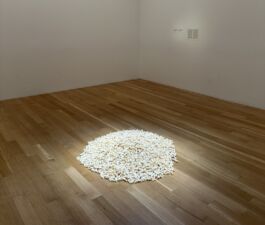
150-ish words – JULY 2025
Felix Gonzalez-Torres: Always to Return
A pile of individually-wrapped cream-colored taffy sits in the center of a gallery, starkly lit. In the adjoining space, a wall is lined with peppermint-like candies, but in a rainbow of colors. Across the hall sit stacks of blank black and white papers. The titles of these works are all “Untitled” with parenthetical text giving slightly more context: (Portrait of Dad), (Portrait of Ross in L.A.), (Party Platform - 1980-1992), and (Passport), respectively. From each piece, viewers are invited to take: eat the candy, roll up the paper and wrap it with a rubber band to carry home. Consuming the work is the appeal, even as it diminishes the artworks themselves. The work quietly offers itself up, relying on the audience to notice, to participate, to care. In consuming, you become a part of something bigger than yourself. It’s both an honor and a responsibility.
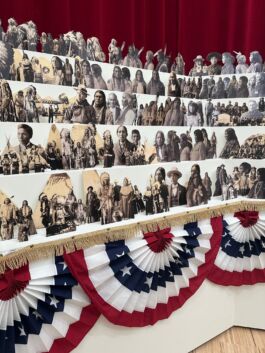
150-ish words – MARCH 2025
The Indian Congress by Wendy Red Star
Even though I was born and raised in Omaha, I’d never heard of the Indian Congress that took place here in 1898 alongside the Trans-Mississippi International Exposition. Though problematic in its intent, more than 500 members from 35 tribes attended, a lasting result being one of the most complete collections of Native American portraits in existence. This gathering comes to life in Red Star’s installation where individuals have been removed from their studio backgrounds and now sit in a riser-like formation against stark white. Men on horseback and close-cropped headshots are almost uniform in size, ranging from black and white to sepia-toned. Framing the installation are heavy red drapes, gold fringe, and red, white, and blue semi-circular flags. The same photographer later travelled to Red Star’s hometown in Montana. These portraits are situated in front of a large color photograph of the present-day site and sit opposite the Indian Congress, fringed with gold-dipped feathers instead of stars and stripes. Walking between the two feels strangely personal, caught between the historic and the aspirational, asking myself what it might mean to be an American.
The original collection of photographs by Frank A. Rinehart is viewable in its entirety via the Omaha Public Library.

150 words x2 – september 2024
Ground Floor by Michael Krebber
Admittedly, I am captivated by this work because I made the mistake of thinking the gallery was closed for installation when I walked in–a mistake that has also been made by viewers of my artwork. The gallery is filled with the contents of the artist’s studio: work tables and ladders and buckets, face-down canvases and tubes of paint and boxes of random supplies – a “complete painting machine,” as the press release says. I imagine the artist’s actual studio sitting empty, a relief from the pressure to produce by sending the means of production to the commercial gallery space itself. The gesture is beguiling, or maybe it’s just bullshit, as a gallerist I talked to later that afternoon remarked. Either way, the audacity made me giggle.
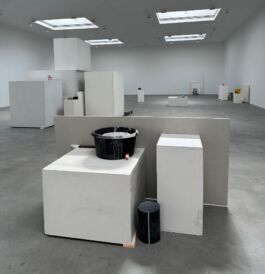
Peter Fischli David Weiss: Polyurethane Objects
A few blocks down 10th Ave, "Peter Fischli David Weiss: Polyurethane Objects" attempts something similar. Large white pedestal-looking objects are scattered throughout the gallery and littered with discarded buckets, light bulb boxes, coffee cups, half-smoked cigarettes and rolls of masking tape. As the exhibition title suggests, everything is constructed from polyurethane before being hand-painted. After Krebber’s work, though, I wondered why Fischli and Weiss would go through the process of constructing these objects at all. In the artists’ words, “By removing their function, the objects are no longer enslaved by it, and the only thing you can do is look at them, and this opens a space in which to do something else.” To my mind, the function is removed by putting the objects in a gallery, not by making a mirror image of the object in polyurethane. Still, there is a playfulness in the work that borders on absurd.
What these shows share is an unselfconsciousness, an effortlessness, even, which from the outside may appear easy, but from inside, I know is anything but.
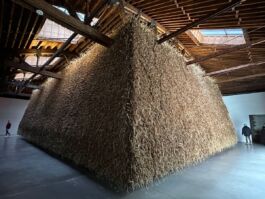
150 words – june 2024
El Abrazo by Delcy Morelos
Almost Aztec in form, El abrazo hovers above the ground, nearly touching the perimeter of the large industrial space surrounding it, as well as the ceiling. The walls are naturally textured and dappled with dried grasses that sway as you walk past, rising at a gentle incline from a square base to a slightly smaller flat top. At the rear, there is a slice cut into the form where the scent that permeates the dirt–cinnamon, clove, and copaiba, a medicinal tree extract used in the Amazon–intensifies, becoming almost headache-inducing the further into its heart you are. The work is called El abrazo, after all, The Embrace, and the effect is calming, like that of being held by a loved one. Perhaps the effect is even more pronounced given its place in New York City, the earthen structure acting as antidote to incessant concrete. Entering the work–inhaling–the work also enters you.
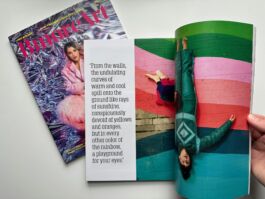
bmore art issue 17: transformation – MAY 2024
Jessie Unterhalter and Katey Truhn’s very first collaboration was a giant outfit and wig that the two of them wore to the annual Halloween party at MICA where they met as undergraduates. “The wig probably weighed four hundred pounds,” Katey recalls. “It was ridiculous.” It’s an apt foreshadowing for the work they’ve become widely known for in the fifteen years since, creating bright, abstract murals in urban environments. The duo continues to take advantage of the underutilized spaces available to them, whether empty studios at MICA or blank walls, to produce something exuberant that stretches physical limits...

dovetailmag.com – MArch 2024
Omaha, Nebraska, probably isn’t the first thing that comes to mind when you think of Malcolm X, but it is in fact his birthplace and now also the location of 4MX, a project by artist and activist Jordan Weber. Created in collaboration with the Malcolm X Memorial Foundation, 4MX is a greenhouse that sits on a sloping expanse behind the main visitor center. The work is situated directly across from a state historical marker and is designed to memorialize the house that once stood there, which was destroyed before the historical significance of the site was known...

150 words – march 2024
The Innocent Collection (New York, 2023) by Pipilotti Rist
Clear plastic objects stick out from the center of the windows of Hauser & Wirth in Chelsea. Clamshells and cups and other containers formed into hearts and fish and guns create a shape akin to the United States. On the inside and in a similar array, white objects surround this shape and fill the frame: plastic bottles and silverware and takeout containers; paper doilies and bags and facemasks; styrofoam packaging materials, a hardhat, and several pairs of underwear. In other words: trash. The astonishing variety of unique shapes made for distinct purposes forces one to consider the time and effort that goes into the production of that which is meant to be discarded. Clean and thoughtfully arranged, the installation rescues these objects from recycling centers and, more likely, landfills, giving waste an elevated afterlife. From inside, the objects obscure the industrial surroundings; from outside, the windows are a means of reflection.
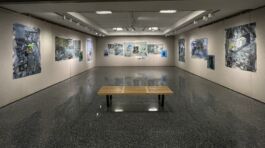
exhibition catalogue essay – february 2024
Dawn, that transient moment in time when darkness begins to disappear as the sun returns to the sky, bringing color to the landscape. There is something of this moment in Cheeny Celebrado-Royer’s exhibition of that name, where her works made of acrylic-gouache, charcoal and pen atop drafting film converge on murky blue backgrounds. In some, the darkness of night still lingers, while others have a dusty haze about them, tending toward green, almost taupe. Some are as bright as blue painter’s tape, which Celebrado-Royer uses elsewhere. But they are all alike in their watery turbulence, broad strokes giving way to dappled corners or puddles of color...
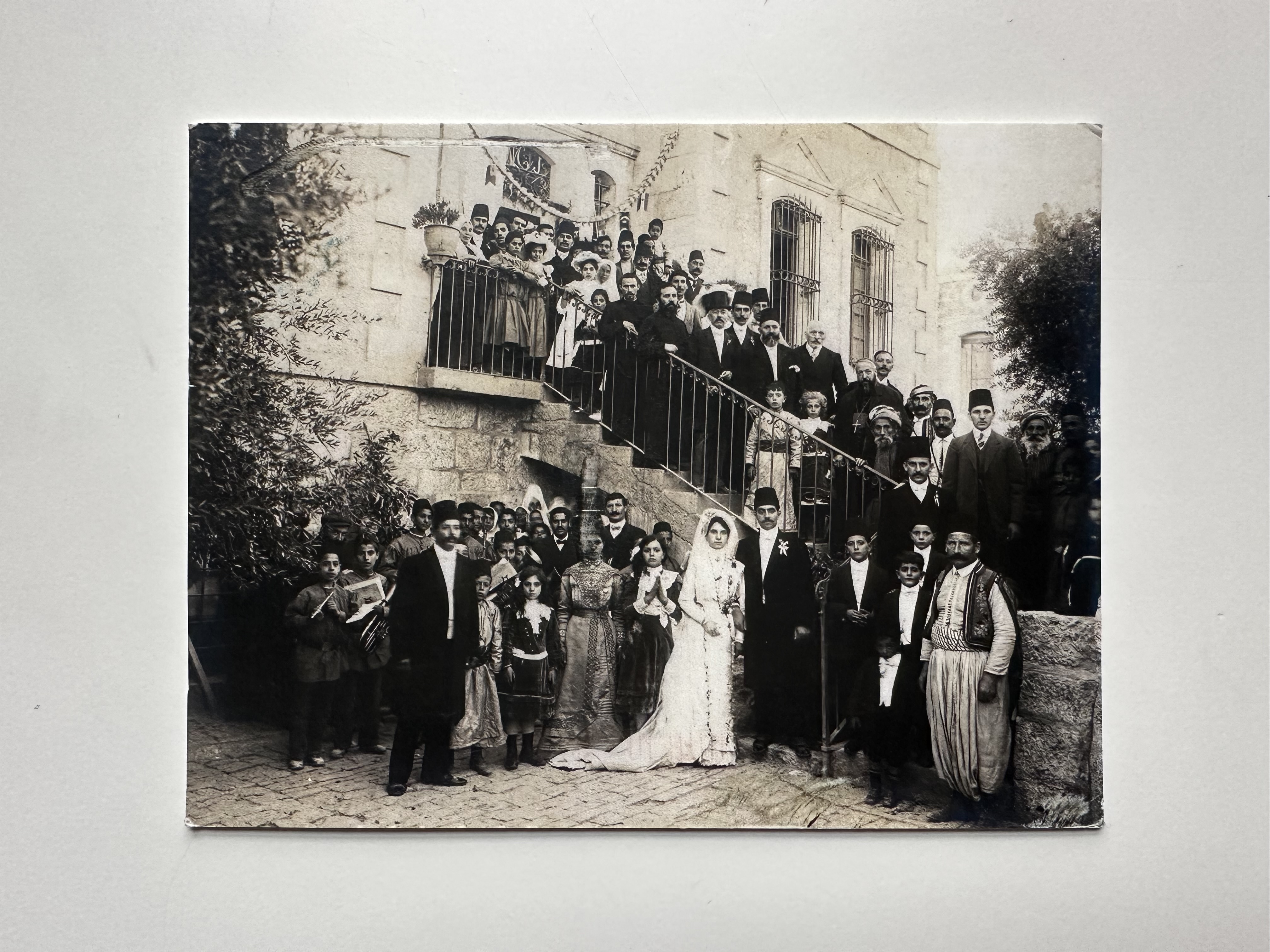
BMOREART.COM – DECEMBER 2023
It has been more than two months since Israel declared war on Hamas. I was traveling in Jordan at the time, having arrived just two days earlier. On October 8, at a tea shop with views over Wadi Araba and Israel and the Palestinian Territories, a group of tourists asked the Bedouin owner how close the border was. Seven miles as the crow flies and 75 more to Gaza. “Israel and Palestine will fight until everyone is dead,” he said matter-of-factly. “There will never be peace.” A few days later and further south in Aqaba, I was just one mile from the Israeli port town...

BMOREART.COM – MARCH 2021
Grids Are Not Neutral: A Year on Zoom ↗
On Lee Walton’s “Zeven Event Zcores for Zoom” and the online platform's subtle social ticks. My first COVID-induced work-from-home Zoom meeting was on March 16, 2020. My university job had used Zoom before then, but in those cases, it was a group gathered in one room with a single person appearing on the screen from a remote location. March 16 was the first time I used Zoom in which all participants were remote and thus it marked my first experience within the grid of equally sized rectangular videos. Such meetings were beginning to play out across sectors in America where we tend to spend our days...
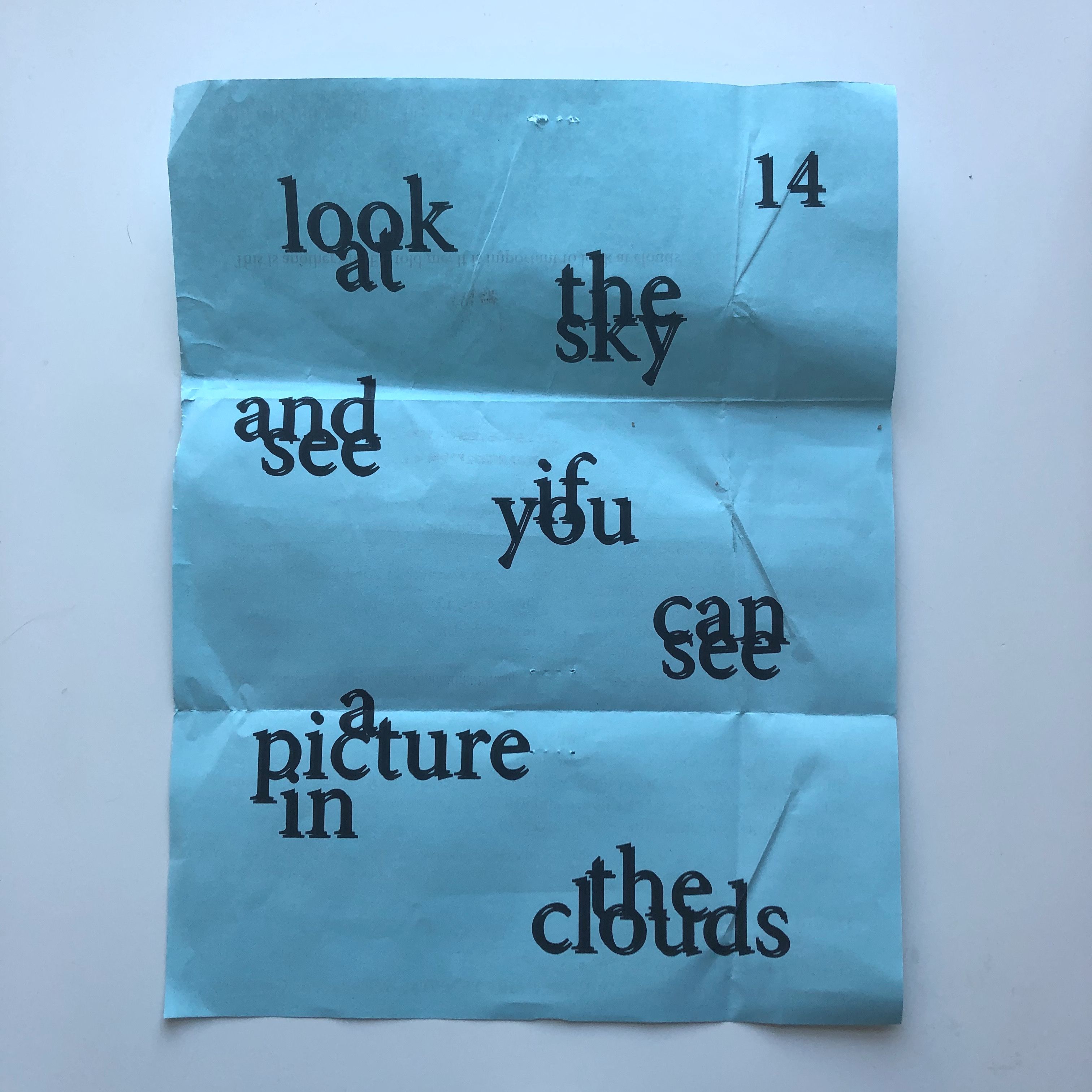
100 WORDS – FEBRUARY 2021
Lessons by David Horvitz
Lessons manages to quietly navigate many pandemic challenges. Travel restrictions? Threatened postal service? Lessons is viewed by mail, sent not only to the gallery, but also to any visitor (or Instagram follower) that wants to be added to the list. Bored? Despairing? Lessons are poetic tasks, printed on colorful paper: make a book written by a tree, find a buried river. The 17 I have received so far (continuing weekly through May) often arrive tattered, evidence of their cross-country travails. Lonely? Viewers are encouraged to document their responses and send them to the gallery in a display of collective action.

100 (and 40) WORDS – OCTOBER 2020
Dream Simulator by Mahsa R. Fard at Gallery Institute
Dream Simulator by Mahsa R. Fard brings the all-too-modern dilemma of separating fact from fiction to the art world in an exhibition of two “real” paintings (quotations from the gallery) displayed throughout various “rooms” (quotations mine). A group of figures dominates one painting and horizontally-oriented architectural forms the other, making them both easy to track throughout the rooms and identify layers of progress and incompletion without ever knowing which are the first versions or which are the last. In the “lobby,” an Artificial Intelligence (artbreeder) has been trained to generate new “paintings” at the click of a viewer’s mouse. Ethereal and inconclusive, they glow on the wall, adding to the haunting quality of this digital gallery where the overly accurate “reflections” in the hardwood “floors” and the especially empty spaces raise questions about the generally agreed upon art world ideals.
100 WORDS – JULY 2020
Deep Down Tidal by Tabita Rezaire
This video problematizes the internet as a product of colonialism while drawing from its imagery and function. A disembodied voice says, “The internet is not in the clouds, it lies on the seafloor,” while fiber optic cables are shown buried along transatlantic routes used in the slave trade. Phantom Google search results float in space, a woman sings, a man appears with snakes around his torso. Finally, a head emerges speaking to the conveniences of industrialization and its costs. There is a call to action: what we do has consequences that affect not only future generations, but the earth itself.
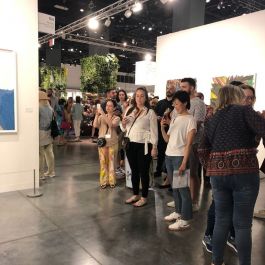
100 WORDS – FEBRURARY 2020
Comedian by Maurizio Cattelan at Art Basel
In short: it’s a banana duct taped to the wall. The sensation: it sold for $120,000. Pictured above: the crowd waiting to take selfies with it at Art Basel in Miami this December. The banana was plastered across the news, instagram, t-shirts, and unsuspecting walls. The piece provoked feelings of shame, outrage, and awe. The collective response was even more bizarre and fascinating than the work itself; the spectacle emblematic of both the art world and the selfie-taking, globe-trotting, influencer-following moment we live in. That an object so simple, so ridiculous, can have such an effect, is really something.

ANYWHERE III – November 28, 2019
Navigating Digital Landscapes ↗
Digital technology is significantly altering the ways in which we experience place and the real world. Through the internet, we can travel anywhere without leaving the comfort of our own home. Google Maps, specifically, has had a major impact on the ways in which we explore new places. While traditional paper maps force the user to insert oneself into an existing landscape, services like Google Maps situate the user as a dot in the middle of a digital map...
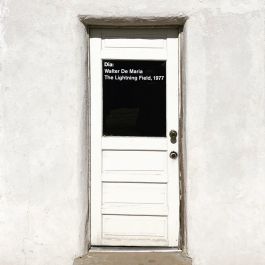
100 WORDS – November 2019
The Lightning Field by Walter De Maria
The Lightning Field isn’t about lightning at all. It’s about being human in a landscape so vast you feel at once diminutive and expansive. The poles measure all that distance and when the stars shine, outer space feels utterly palpable. Beyond scrub and sky, the poles point to purple mountains, tracing their tops and piercing the blue above. At 4:35, their tips catch the sun and glow like flames. At 6:15, they look like fluorescent bulbs standing on end, flattening to a steely blue up close. The resplendence fills me with emotion, bringing to mind everything leading here.
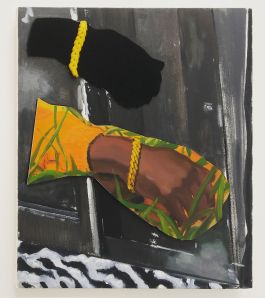
100 WORDS – OCTOBER 2019
James Williams: Color of the Day
The title of Williams’ exhibition can only refer to one color, which is actually the absence of any color at all: black. In these works, the figures simultaneously hold their ground and retreat. The blackest blacks are rendered in velcro, layered between paint, giving dimension to form and presence to shadow. Williams’ spare imagery is surprisingly potent. A glimpse of red jersey with white piping = Michael Jordan. A painted arm with a gold chain around the wrist, the skin duplicated in velcro right above it, draws a line between rap culture and slavery. Such delicate gestures, so laden with meaning.
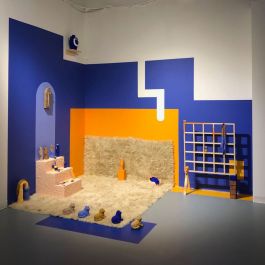
100 WORDS – AUGUST 2019
Growing up, I had a friend that liked to play a game where we would fake laugh for 10 seconds, which, for two pre-teen girls, was more than enough time to induce actual laughter. For Rachel Debuque, aka Hal Henderson, Certified Laughter Leader, fake laughing can lead not only to real laughter, but also to crying. Evidence suggests that the same part of our brains controls both actions, releasing endorphins throughout our bodies. Lately, I’m more prone to tears, so it’s nice to be reminded to laugh at the absurdity of it all, even if it the laughter’s not real.
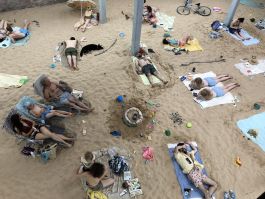
100 WORDS – JULY 2019
Sun & Sea (Marina) by Lina Lapelyte, Vaiva Grainyte, and Rugile Barzdziukaite
Standing on the second floor of the Lithuanian Pavilion at the Venice Biennale, I watched an opera unfold below me. Set on a stage of artificial sand, it gives collective voice to individual suffering, like getting sand in your suit or workplace expectations. The performers are just like any other beachgoers—children play in a kiddie pool, a gray-haired group does yoga in the corner, twins scroll their phones. The scene is mundane, yet one that many of us strive for: a beach vacation. Relaxation. Escape. Which leads to the existential dread that comes with too much time on your hands.
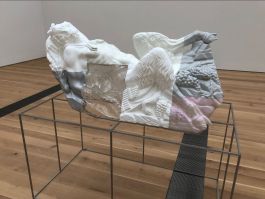
100 WORDS – JUNE 2019
Oliver Laric at the St. Louis Art Museum
Reclining Pan is the only artwork in the large contemporary gallery space at SLAM. It is obviously a reproduction—one from the museum’s collection—reclining half-man, half-goat figure spliced into geometric sections of gray, white, pink, and translucent polymers. It sits on an aluminium grid-like base instead of a traditional pedestal, alluding to the sphere where you can find Laric’s other version of the same sculpture: threedscans.com. Rather than degrading reproductions, copies, scans, Laric institutionalizes them through collaboration with museums to create a publicly accessible archive. It is the degradation—and distribution—that Laric is putting on a pedestal.
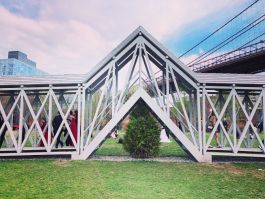
100 WORDS – MAY 2019
Bridge Over Tree by Siah Armajani
Bridges are architectural interventions connecting points in a landscape, usually spanning over bodies of water. Situated on the Fulton Ferry Lawn in Brooklyn Bridge Park, Siah Armajani’s covered bridge has no meaningful beginning or end, making that which it passes over the focal point: a fir tree. The bridge rises steeply at its center in the shape of an inverted “V,” the topmost branches of the tree grazing its underside. The form arbitrarily protects and inhibits the tree, allowing the viewer to walk over its top rather than around its edges. It implicates not only the path, but its user.

100 WORDS – MARCH 2019
The New York Earth Room by Walter De Maria
The name is self-explanatory: 280,000 pounds of dirt, 22" deep, covering 3600 square feet. Intended for a three-week exhibition in a second-floor Soho loft, it has remained there for the past 42 years. It is both monumental and futile—an affront to capitalist sensibilities. It is free to visit and there is nothing to buy. There isn't even much to see—the lights are not turned on, and visitors stand behind a clear barrier. But the scent—akin to a used bookstore in the stairwell, closer to that of a forest floor as you ascend the steps—transports you. It's worth the trip.
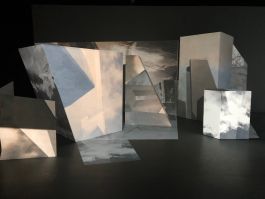
100 WORDS – JANUARY 2019
Singular Space by Shannon Collis and Liz Donadio
In what usually feels to be the cavernous space of the ICA Baltimore, this visual and auditory installation stands its ground. Six projections are mapped in angular, overlapping shapes, the imagery flowing and falling over large Brutalist-inspired objects that mimic the place it documents: Forum Fountain in East Baltimore. Monumental, the piece is barren and still, the looping soundtrack meditative, drawing one inward. The trees are leafless, the concrete pervasive, and humans are nowhere to be found. A public sculpture abandoned. Even in the gallery viewers keep their distance: a statement on public space and our anxiety in navigating it.
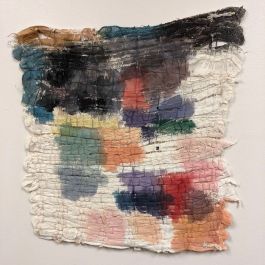
100 WORDS – DECEMBER 2018
Jinie Park: New Work at Office 116A
These intimate paintings hold their own in this office-turned-gallery space. Though tenuous—the colors bleeding, the fabric pulling, the edges fraying—they are certain. They shun the surface and the frame, i.e. expectations. Where paint would usually sit on top of a gessoed canvas, stretched tightly around a wooden frame, here, it permeates. The surface and the structure are inextricably intertwined—even dependent upon each other. The color soaks and spreads. It wanders. It pulls you in, like it did the paint. The meandering paths of the fabric—disrupted by color swaths—create lyrical assemblages that function as invitations for your own ruminations.

Bmoreart.com – November 26, 2018
Worlds Away: The New Glenstone ↗
The Glenstone is full of contradictions. While it is free and open to the public, it is also privately owned, remotely located, and booked three months in advance. After a significant expansion, its newly inaugurated pavilions designed by Thomas Phifer boast 204,000 square feet, but offer just 11 gallery spaces, nine devoted to single artists from the collection. One gallery features no art at all, rather a collection of books and a bench that faces an expansive window overlooking an additional 130 acres of newly acquired land. Some see the $200 million endeavor...

100 WORDS – November 2018
Fruit and Other Things by Lenka Clayton & Jon Rubin at the Carnegie International
Black words in all caps are framed in white: COWS, COWS DRINKING, COWS RESTING. In the center of the gray gallery two calligraphers paint more of the same, an alphabetical list of 10,632 paintings rejected from the Carnegie International between 1896-1931. Each new piece is slid into a frame on the wall while the work it displaces is wrapped up with a certificate of authenticity for viewers to take home. It is a tedious depiction of rejection. 43 EVENINGs, 123 PORTRAITs, 25 WINTERs. A collective mourning of missed opportunity. 10,632 share grievances acknowledged and then dispersed.
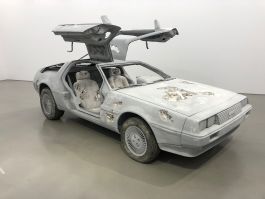
Bmoreart.com – October 15, 2018
Two Days in Chelsea and the Lower East Side ↗
One of my favorite things about living in Baltimore is being close enough to New York to take advantage of the massive amounts of art exhibited without paying the premium of living there— financially or emotionally. Since most Chelsea galleries are closed on Sundays, I typically spend Saturday zig-zagging between 10th and 11th Avenues from 28th to 19th streets and Sunday downtown in the Lower East Side...

100 WORDS – October 2018
Unassuming yet intimidating in its blonde brick, octagonal-ish exterior, the Rothko Chapel is both tomblike and transcendent. Sitting on a round pillow in the exact center of the space facing the triptych hanging in the recess opposite the entrance, I watched the canvases shift from black to purple as the quality of the light changed in response to the clouds passing overhead. The muted canvases draw attention to the atmosphere itself rather than the paintings hanging on the walls. It’s a solitary place where one can go to be with others, where stillness and light combine in a shared solemnity.
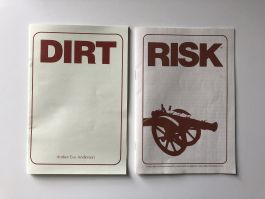
BOOKLET – Summer 2018
You can see the pine trees growing in the backyard of my childhood home from the street out front. They line the northern edge of the yard, towering over one hundred feet. At the tip tops they sway, their boughs laddered and sticky with sap. Hidden beneath is my playhouse, made from scraps my dad used to build the shed, both painted a dusty blue to match my parents’ house. I had to crouch below the branches to reach the door, and every spring I would clean out the cobwebs that had gathered over the winter, dragging all the furniture and other objects out into the sunshine. I remember cleaning the playhouse more than I remember ever playing in it...
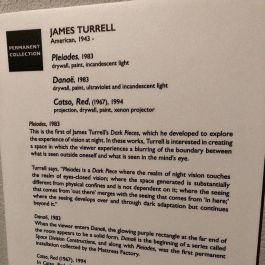
100 WORDS – AUGUST 2018
James Turrell at the Mattress Factory
With an appointment to view Pleiades, I turned a corner, followed a ramp into a completely dark room, and stumbled into one of two chair with 15 minutes to try to see the work. Try, because it was so dark that my eyes felt plugged, as if they were stuffed with cotton. I moved my hands in front of my face. Nothing. Only an engulfing blackness that my mind made out to be the size of a large amphitheater. Darkness and patience slowly gave way to an amorphous glow in the middle distance, the intangible made visible, but just barely.

Bmoreart.com – june 14, 2018
Deconstructing the Flag and Reconstructing a Collective Identity ↗
Flags are abstractions, symbolic design objects representative of nations and institutions, used to show support for or dissent from one’s country. In Waving and Wavering: Contemporary Artist Flags curated by Alexander Jarman at Maryland Art Place, there are two representations of the American flag. Both are rendered as deconstructions, a fact that points to the complicated moment in American history in which we find ourselves...
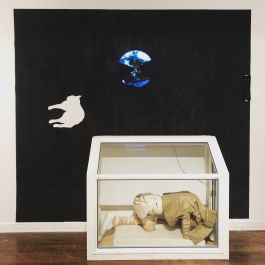
100 WORDS – june 2018
Taha Heydari's Dual Use: Baltimore to Samarra traces a history of Thiodiglycol (TDG) from a plant in Baltimore to an attack on the town of Halabja in Iraq. Extensive wall text describes the various uses of TDG, including both mustard gas and the ink of ballpoint pens, the effects of which are a key point in the path Heydari traces. The justaposition of dense language and sparse visuals—including an empty clear acrylic box and a row of white wall vents hung at eye level—forces one to consider how information travels, who controls it, and all that we don't know.

100 WORDS – may 2018
Labbodies: A Monumental Absence
It's been almost nine months since Baltimore's Confederate statues were removed, the empty plinths still dripping with the remnants of "Fuck Trump" splattered in red paint. On April 19, Labbodies hosted A Monumental Absence at the plinth on Mount Royal Avenue, a performance by Najee H.F. The artist sat at the base of the plinth braiding her hair amidst the plants and flowers of the large raised bed. Moving from braid to braid, she cut off short lengths, eventually gathering the clippings together like a bouquet and planting each one in the mud—a springtime gesture of restrained rebirth.
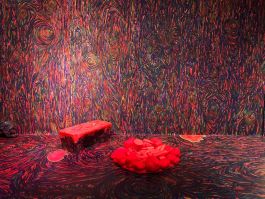
100 WORDS – APRIL 2018
Phaan Howng: The Succession of Nature
Phaan Howng: The Succession of Nature at the BMA imagines a post-apocalyptic future void of mankind. Freed from—and explicitly because of—humanity (neon debris as evidence), nature congeals into one all-encompassing tapestry of swirling dark blues and crimson. Rather than disorient, it envelopes. It's cozy. So it makes sense Howng wears clothes in the same pattern as her installation, and that she founded ENDO, The Eternal Navigators of Doom Organization, whose mission is to help members live in the post-apocalypse. It suggests that in order to survive, we will have to conform to nature's will rather than the other way around.

100 WORDS – MARCH 2018
Spencer Finch's art is a confluence of poetics and precision: the flickering light of a cloud passing overhead, ice cream flavors based on the color of the sunset, or the atomic makeup of moon dust collected during the Apollo 17 mission, as seen in his new installation at the Baltimore Museum of Art. The dangling light fixtures of Moon Dust are again a confluence—of rigidity and ephemerality, the iciness of space combined with the warmth of electricity. The glow is at once contained and dispersed, suspended overhead like a collective thought bubble filled with musings of the universe.

100 WORDS – FEBRURARY 2018
Patty Chang: The Wandering Lake
Patty Chang: The Wandering Lake at the Queens Museum evades classification. There are projections on zig-zagged cardboard panels, a maze of photos mounted on plywood grids, glass sculptures of plastic bottles, found objects, and a book. Loss and absence wend their way around liquid abstractions of what once was: the ritualistic cleansing of a dead whale washed ashore in Newfoundland; discarded breast milk in empty receptacles in Uzbekistan; used water bottles filled with urine as Chang traced the South-to-North Water Diversion project in China. The narrative arc is both transparent and elusive, enough to satisfy, intrigue, and invite lingering.
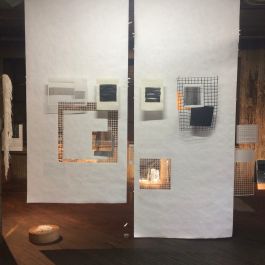
100 WORDS – JANUARY 2018
Lu Zhang's installation at Area 405 treats the walls, pillars, and the emptiness in between as the canvas for her hanging grids and ephemera. Where you might expect sturdiness, there is fragility instead. The grids sway with the movement of bodies and threaten to collapse. Somehow they call to mind aerial resolution targets and I think of Hito Steyerl's video "How Not to be Seen" in which costumed bodies blend with resolution targets in order to disappear. Zhang’s installation then becomes a site both delicate and imposing—one to inhabit or escape, depending on how you see yourself in your surroundings.
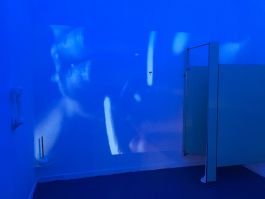
100 WORDS – DECEMBER 2017
Lost Earring by Elliot Doughtie
Slipping into Elliot Doughtie’s “Lost Earring” in the Project Room at School 33 is like going swimming in your adolescence—not quite sure of the way you feel in your own skin, the silky blue caresses and conceals all at once. From one site of adolescent insecurity to another—pipes, faucets, and a single bathroom stall sparsely fill the space. A projection shows a pair of hands moving up and down on what appears to be some kind of plumbing implement, adding to the allure and ambiguity. Subtly tongue-in-cheek, Doughtie leaves it to the viewer to draw his/her own conclusions.
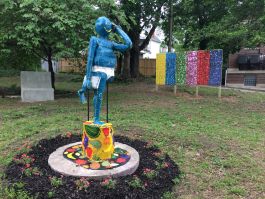
Bmoreart.com – JUNE 1, 2017
Tamed Lot Turned Sculpture Park ↗
Artist Lisa Dillin has spent the past six months transforming a vacant lot in the Coldstream Homestead Montebello neighborhood into a temporary sculpture park. The city-owned lot—adopted by the CHM Community Corporation through the Baltimore Office of Sustainability—listed the site as a potential space for art through BOPA’s Lots Alive grant program. Using her experience as an educator, Dillin developed a fellowship program to mentor eight selected artists as they created work for the site...
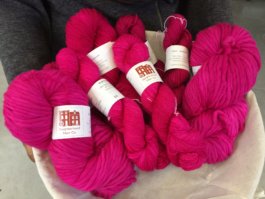
Bmoreart.com – FEBRUARY 16, 2017
Standing on the National Mall last week amid a sea of hand-knitted pink Pussyhats, the unifying visual identity of the Women’s March on Washington, I couldn’t help but feel a sense of pride. Pride in being a woman, in being a maker, in participating in the resistance. Where would we be without Lady Justice and Lady Liberty? Like the stitches that made up every hat, so was each woman—a small component that, when repeated, becomes something greater than the sum of its parts...

Bmoreart.com – NOVEMBER 18, 2016
This week has me thinking a lot about the breath. Breathing—an unconscious act until it suddenly becomes difficult. Watching the election results come in Tuesday night, a dozen versions of the same GIF showed up in my Facebook feed. A dot becoming a line growing into the outline of a triangle, then square, up to an octagon before collapsing in upon itself again in an endless loop. Breathe in. Breathe out...
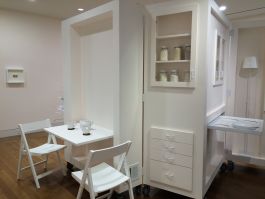
Bmoreart.com – AUGUST 4, 2016
Home, museum, salvaged material re-use center—these are the sites and subjects of Marian April Glebes’ Three Sheds for Three Sites, a triptych of sculptures that explores concepts of mobility and preservation through curated objects in three locations. “Shed I: Home Shed” is located at the Baltimore Museum of Art where, according to the parenthetical title of the piece, it “performs the functions of home.” “Shed II: Museum Shed” is at the Loading Dock, a salvage material re-use center that partnered with the artist for the piece, where it performs the functions of the museum. The final part, “Shed III: Collection Shed,” is typically located in the artist’s own home...

essay for a-z west log – Fall 2017
Report from Wagon Station No. 7 ⤓
Tucked between rocks, Wagon Station No. 7 is the last to receive the morning sun. Though closest to the living room and other common areas, a low, oblong stone and a creosote bush block the most direct path. Large rocks jut directly upward on the other sides, creating a generous southeastern nook. Situated in this way, No. 7 is aimed at the distance—the violet shadow of faraway mountains visible over the roof of the kitchen, beyond the nearest hill and the disappearing highway...

THESIS Essay – Spring 2016
I was born and raised in Nebraska, and it’s still the place I say I’m from, even though I haven’t lived there in almost a decade, even though I became who I am when I left. Nebraska is big skies and flat expanses. It is distant trains on the horizon. It is my dad’s weak coffee. It is the specific and the vague. It is deep roots. It is home. There, in my mind, it is eternally summer: hair tangled by highway drives, cicadas chanting, aqua pools that turn your hair green, golden rows of wheat and corn. But the cold, long, lonely months are the foundation for the solemnity of Nebraskan character...

Visual Essay – Spring 2016
Exhibition Catalogue contribution for "not really here" at Platform Gallery, Baltimore, MD